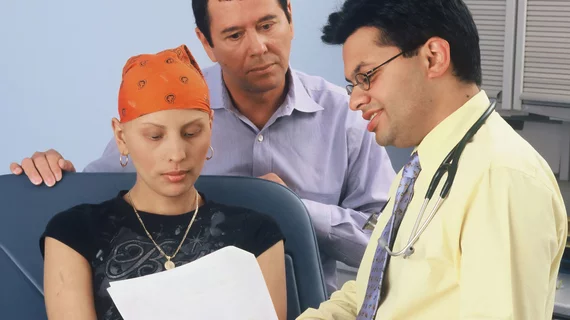How second opinions from subspecialty radiologists alter cancer care
Abdominal imaging studies submitted to cancer care centers from outside organizations are often suboptimal for oncologic care, frequently resulting in treatment changes.
A new study published in Clinical Imaging analyzed more than 900 outside imaging exams that were submitted to an oncology institution and compared the original radiology reports to that of the second opinion reads of subspecialty abdominal radiologists. The experts found that the second opinion interpretations noted wide variability in diagnostic image quality and resulted in a significant amount of treatment changes.
“Before further consultation or treatment, cancer care providers and patients request expert radiologic opinions from tertiary oncology centers. The patients undergo consultation at specialized institutions to obtain expert opinions about their imaging findings, affecting their treatment plans,” corresponding author Mayur Virarkar, of the division of abdominal and general body imaging at the University of Florida College of Medicine, and co-authors wrote. “Secondary imaging interpretation can avoid repeat imaging and its associated technical costs.”
For the study, the researchers analyzed 915 outside CT and MR abdominal imaging exams that had been submitted to their institutions. They compared the quality and accuracy of the initial radiology reports, technical quality of imaging and exam appropriateness to the secondary interpretations completed by subspecialty radiologists. Importantly, the researchers took note of the resultant effects each of these observations had on patients’ clinical treatment.
Out of 744 CT (81%) and 171 MR (19%) outside exams, suboptimal quality was noted in 65% compared to the experts’ institution and 31% of studies were deemed inappropriate for oncologic care purposes. Discrepancies between the original reports and second opinions were observed in 34% of cases, 48% of which resulted in a change in treatment plans after secondary interpretations.
“The details of oncologic imaging studies have significant ramifications for patients' treatment plans and overall survival,” Virarkar and colleagues wrote. “Subspecialty radiologists' secondary interpretations and technically adequate CT and MRI studies are extremely valuable, as they can decrease the need for repeat imaging.”
The authors highlighted the importance of second opinions given by subspecialists, especially in cases when treatment plans are altered, as they can optimize care for oncology patients.
More oncology imaging content:
ACR's thyroid imaging reporting and data system 'dramatically' reduces unnecessary nodule biopsies
New research sheds light on imbalance in cancer imaging studies
Specialized ultrasound can accurately detect prostate cancer, new research shows
These ultrasound features distinguish between COVID vaccine-related and malignant adenopathy

